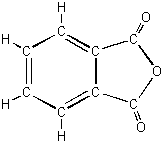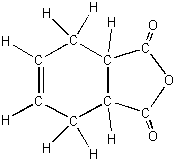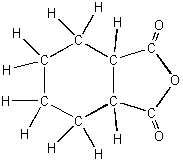Heat of Combustion
PURPOSE
DISCUSSION
EQUIPMENT AND CHEMICALS
PROCEDURE
CALCULATIONS
Problem 6.2 Resonance Stabilization Energy
Purpose The purpose of this investigation is to determine the heats of combustion of three related compounds. From these the heats of formation and the resonance stabilization energy may be calculated.
Discussion: Consider the molecular structural differences in these three compounds.
Compound I. phthalic anhydride:


The difference between the heats of formations
of compounds (3) and (2) is the heat of formation of one double bond. You
might expect that the difference between the heats of formation of compounds
(3) and (1) would be three times that of compounds (3) and (2). Actually
the heat of formation of (1) is less due to the resonance stabilization
energy. The aromatic nucleus of phthalic anhydride may be written as the
following:

Resonance leads to increased stability and a lower heat of formation.
Directions: Calibrate the calorimeter with benzoic acid and measure heats of combustion of the acid anhydrides. Remember to use samples no larger than approximately one gram. For each anhydride calculate the heat of combustion, the enthalpy of combustion, and the enthalpy of formation. From the enthalpies of formation determine the resonance stabilization energy of the aromatic nucleus. Compare your value with the literature value of 49 kcal/mol (205 kJ/mol) for benzene and try to account for any difference.
SAMPLE CALCULATIONS
Experiment: Exp. 6.2 Bomb Calorimeter
Sample Data:
Calculations:
Compare your results with the NIST Chemistry WebBook.